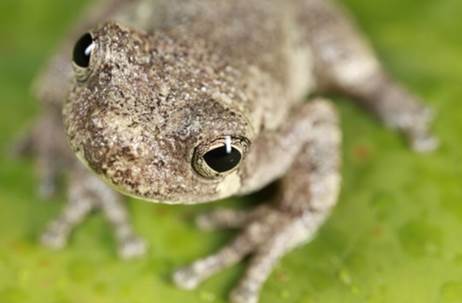

一些种类的青蛙能快速开启对一组常用杀虫剂的遗传抗性。近日,科学家在于马里兰州巴尔的摩市举行的美国生态学学会的一次会议上报告称,在一种情况下,树蛙能在暴露于污染环境后仅仅一代的时间里部署出此类防线。
这是首个已知的脊椎动物种群通过被称为表型可塑性的过程发展出杀虫剂抗性的例子。在这一过程中,某些基因的表达发生变化,以应对环境压力。它并不涉及通常需要很多代才能发生进化的基因本身的改变。
上述研究团队的领导者、纽约特洛伊伦塞勒复合技术研究所生态学家Rick Relyea表示,青蛙的这种快速响应为三分之一面临威胁或灭绝的两栖类物种带来了希望。
“青蛙能以比我们此前认为的更快速度发生进化。”俄勒冈州立大学两栖动物生态学家Andrew Blaustein认为,“很可能这些惊人的发现对于物种保护具有一些实用价值,但形势是复杂多变的。就像一杯鸡尾酒,很多问题会混在一起。”
该团队最新发表的一些成果表明,生活在被污染农田附近的树蛙个体发生进化,能在自然选择通过一个被称为遗传同化的过程偏好“已开启”的表型后,持续表达这种抗性。相反,生活在无杀虫剂田地中的种群只有在暴露于低浓度的化学物质后才表现出其抗药性。
此前,科学家仅观察到极少数因表型可塑性而发生进化的其他物种,比如植物向高海拔地区转移,以适应气候变化。
Relyea表示,诸如螨虫和甲虫等农业害虫——杀虫剂的既定目标——也能以同样的方式发展出抗性。理解这种抗药性如何进化出来,能帮助农民阻止害虫发展出抗性。(来源:中国科学报)
Here today, gone tomorrow: Short-term retention of pesticide-induced tolerance in amphibians
Abstract Pesticide use has led to the ubiquitous contamination of natural habitats, which has inadvertently increased pesticide tolerance in target and nontarget species. Historically, increased pesticide tolerance has been attributed to natural selection for tolerance among individuals of affected populations. Recent research, however, has discovered that pesticide tolerance can be increased through phenotypic plasticity. Although induced pesticide tolerance may benefit organisms experiencing contaminated systems, little is known about its occurrence in vertebrates, its retention through ontogeny, or potential life history tradeoffs. Using time-to-death assays at 2 distinct developmental windows, the authors discovered that gray treefrog (Hyla versicolor) tadpoles exposed to sublethal concentrations (0 mg a.i./L, 0.5 mg a.i./L, and 1.0 mg a.i./L) of the insecticide Sevin® (carbaryl) early in life increased their pesticide tolerance to a lethal carbaryl concentration 5 d after sublethal exposure. However, this increased tolerance was not retained later in ontogeny (23 d post-sublethal exposure). Moreover, no indication was found of pesticide-induced treefrogs experiencing life-history tradeoffs in terms of survival to metamorphosis, mass, or snout–vent length. Gray treefrogs are only the second vertebrate species and the second amphibian family to exhibit pesticide-induced tolerance after sublethal exposure. The authors' data suggest that the ability to induce increased pesticide tolerance may play a critical role in amphibian survival in contaminated ecosystems. However, future work is needed to test the occurrence of inducible pesticide tolerance among numerous amphibian populations worldwide
Environmental Toxicology and Chemistry
原文链接:http://onlinelibrary.wiley.com/doi/10.1002/etc.3056/pdf
The contribution of phenotypic plasticity to the evolution of insecticide tolerance in amphibian populations
Understanding population responses to rapid environmental changes caused by anthropogenic activities, such as pesticides, is a research frontier. Genetic assimilation (GA), a process initiated by phenotypic plasticity, is one mechanism potentially influencing evolutionary responses to novel environments. While theoretical and laboratory research suggests that GA has the potential to influence evolutionary trajectories, few studies have assessed its role in the evolution of wild populations experiencing novel environments. Using the insecticide, carbaryl, and 15 wood frog populations distributed across an agricultural gradient, we tested whether GA contributed to the evolution of pesticide tolerance. First, we investigated the evidence for evolved tolerance to carbaryl and discovered that population-level patterns of tolerance were consistent with evolutionary responses to pesticides; wood frog populations living closer to agriculture were more tolerant than populations living far from agriculture. Next, we tested the potential role of GA in the evolution of pesticide tolerance by assessing whether patterns of tolerance were consistent with theoretical predictions. We found that populations close to agriculture displayed constitutive tolerance to carbaryl whereas populations far from agriculture had low naïve tolerance but high magnitudes of induced tolerance. These results suggest GA could play a role in evolutionary responses to novel environments in nature.
Evolutionary Applications
原文链接:http://onlinelibrary.wiley.com/doi/10.1111/eva.12267/pdf



